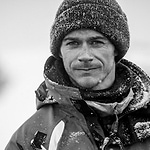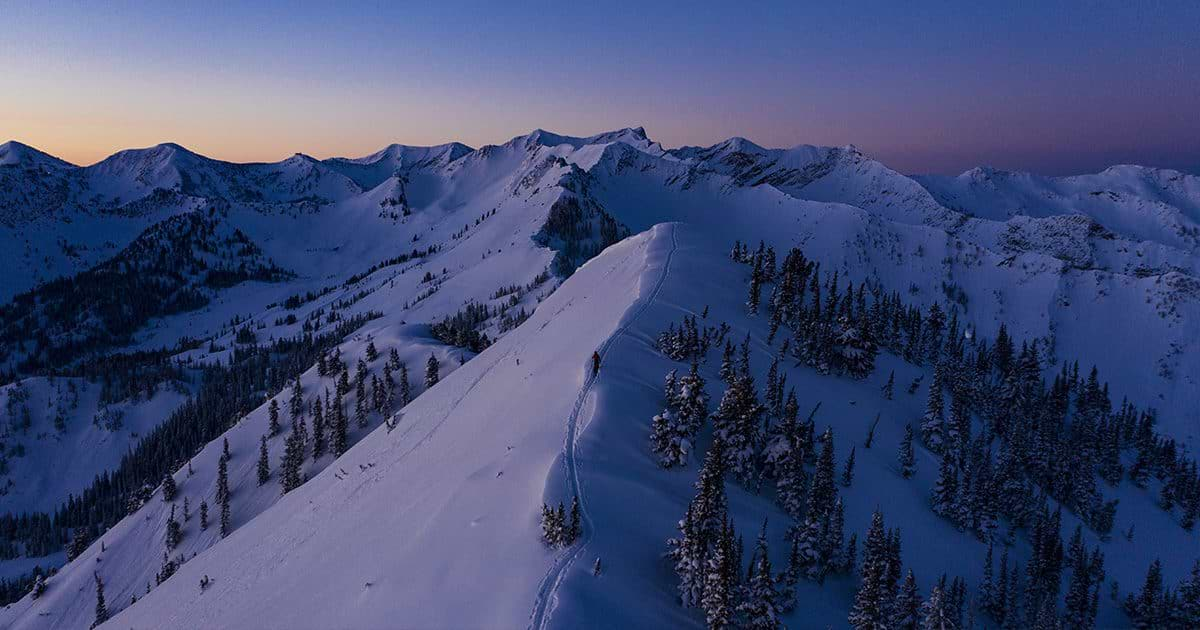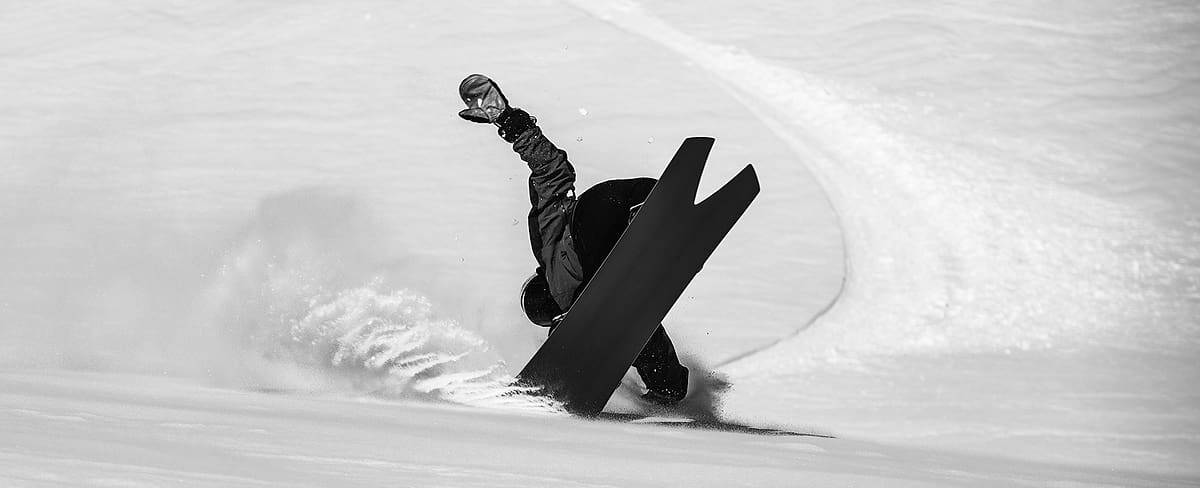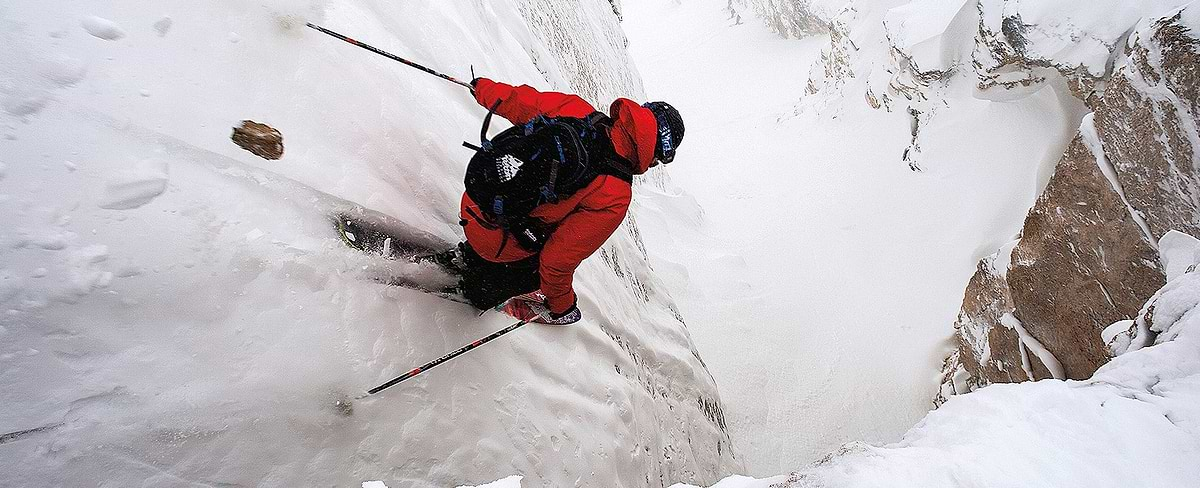

Not all ice is created equal. Glacial ice can vary in appearance from opaque sea glass to crystal clear – the difference is pressure. Ice from the bottom of the glacier has air bubbles squeezed out of it from the immense pressure from the ice above creating the finest ice a whisky could ask for.
Not all ice is created equal. Glacial ice can vary in appearance from opaque sea glass to crystal clear – the difference is pressure. Ice from the bottom of the glacier has air bubbles squeezed out of it from the immense pressure from the ice above creating the finest ice a whisky could ask for.
Ice Ice Baby!


Sea ice is the key to the Arctic ecosystem for both mega and microflora and fauna. Polar bears use the sea ice as a platform to hunt seals but below the surface, the ice provides prime real estate for inverted underwater gardens of algae which feeds the phytoplankton which feeds the vast majority of Arctic birds, seals, and whales.
Sea ice is the key to the Arctic ecosystem for both mega and microflora and fauna. Polar bears use the sea ice as a platform to hunt seals but below the surface, the ice provides prime real estate for inverted underwater gardens of algae which feeds the phytoplankton which feeds the vast majority of Arctic birds, seals, and whales.


The face of tidewater glaciers are exciting places. The weight from the upper glacier migrating down towards the sea puts intense pressure on the open face until the ice calves off, creating icebergs of all shapes and sizes. Monacobreen on the north coast of Spitzbergen is one of the most active glaciers in the region.
The face of tidewater glaciers are exciting places. The weight from the upper glacier migrating down towards the sea puts intense pressure on the open face until the ice calves off, creating icebergs of all shapes and sizes. Monacobreen on the north coast of Spitzbergen is one of the most active glaciers in the region.
Ice is the most dynamic and arguably the most important element on planet earth. On a broad scale, it is the keeper of time and history absorbed into its layers–thousands of years old. It is the regulator of climate and thermal movement across the globe. Ice can crumble mountains and carve deep fjords, but also floats in the air. Sea ice acts as the soil for polar seas creating vast inverted gardens so life can flourish and simultaneously as platforms for megafauna to hunt from.


The humble beginnings of great pans of sea ice are grease ice. As sea temperatures dive below -1.8°c the surface of calm seas develops a grease-like appearance which gradually thickens and smacks together to create frozen pancakes which eventually freeze into great pans of ice which cover hundreds of thousands of square kilometers each year.
The humble beginnings of great pans of sea ice are grease ice. As sea temperatures dive below -1.8°c the surface of calm seas develops a grease-like appearance which gradually thickens and smacks together to create frozen pancakes which eventually freeze into great pans of ice which cover hundreds of thousands of square kilometers each year.


Now dwarfed by the massive walls of Baffin Island’s east coast, glaciers once ruled the island, carving the deep fjords from solid granite into sheer walls prized by climbers here in Tom Ford Fjord.
Now dwarfed by the massive walls of Baffin Island’s east coast, glaciers once ruled the island, carving the deep fjords from solid granite into sheer walls prized by climbers here in Tom Ford Fjord.
To put it lightly, I have an ice obsession. From bergs to glaciers to waterfalls–I have thousands of images of ice. Working as a polar photo guide and adventure photographer does not help with my addiction. On my first trip to Antarctica, I remember one of the seasoned expedition team members saying that you never get sick of ice-and no matter how many frames I’ve clicked of icebergs, a new angle or change of light reveals new beauty. Then ‘click’-another ice photo. Thank God for digital photography!


Fractals are infinitely complex patterns that are self-similar and occur throughout nature. Here, the meltwater streams on frozen Garibaldi Lake create ever-widening paths like tree branches with feathered ends.
Fractals are infinitely complex patterns that are self-similar and occur throughout nature. Here, the meltwater streams on frozen Garibaldi Lake create ever-widening paths like tree branches with feathered ends.


Not all ice is created equal. Glacial ice can vary in appearance from opaque sea glass to crystal clear – the difference is pressure. Ice from the bottom of the glacier has air bubbles squeezed out of it from the immense pressure from the ice above creating the finest ice a whisky could ask for.
Not all ice is created equal. Glacial ice can vary in appearance from opaque sea glass to crystal clear – the difference is pressure. Ice from the bottom of the glacier has air bubbles squeezed out of it from the immense pressure from the ice above creating the finest ice a whisky could ask for.
One of the most endearing characteristics of ice is its ability to morph from one form to another. Beginning as an icecap – flat and docile, its sheer mass forcing it towards the sea becomes fractured into crevasses and seracs tumbling down mountainsides. The ice at the bottom of the glacier turns translucent from billions of tons of pressure squeezing out minute air bubbles. When pieces like this eventually reach the sea, they are named growlers for the gut-wrenching sound they make as they threaten to tear oak planks from ribs as they grind their way down the sides of passing ships. Their extreme density conceals them just below the water’s surface, camouflaged as deep ocean blue or black. This is just one example of thousands of incredible shapeshifting acts.


A massive iceberg mirrors the jagged peaks of Booth Island on the northern Antarctic peninsula.
A massive iceberg mirrors the jagged peaks of Booth Island on the northern Antarctic peninsula.


Glaciers dominate the Antarctic landscape and cover roughly 97.6% of the continent – an area of 5.3 million square miles. They come in an infinite collection of shapes, sizes, and patterns – all unique and ever-changing.
Glaciers dominate the Antarctic landscape and cover roughly 97.6% of the continent – an area of 5.3 million square miles. They come in an infinite collection of shapes, sizes, and patterns – all unique and ever-changing.
It’s not all hulking mass and destructive power though. Some of nature’s most beautiful and delicate structures are made of ice. Upper atmospheric particles dance in the air refracting the light of the sun or the moon into eerie circles and bows. Hoar frost delicately grows from moisture sucked from snow on frigid nights. Each feathery tip inching outwards, silently waiting for even a slight breeze to shatter its pristine form.
Ice can also bend light. When photons of light hit aerated ice, the spectrum of light bounces around in this loose structure and is sent back at us in the full spectrum–white. But when ice is purer with less air, the long waves on the red spectrum are absorbed and only the blue (and in smaller amounts green and violet) short wave light particles are reflected, which is making the ice appear blue to the human eye. The deeper you peer into a crevasse, the more red light is absorbed and a deeper blue is created making the ice appear to be glowing from the inside.


The flat expanse of sea ice connected to the land is called ‘fast ice’. The body of Antarctic Sea ice is the largest in the world covering roughly 5 million square kilometers in the winter months.
The flat expanse of sea ice connected to the land is called ‘fast ice’. The body of Antarctic Sea ice is the largest in the world covering roughly 5 million square kilometers in the winter months.


Sea ice is the key to the Arctic ecosystem for both mega and microflora and fauna. Polar bears use the sea ice as a platform to hunt seals but below the surface, the ice provides prime real estate for inverted underwater gardens of algae which feeds the phytoplankton which feeds the vast majority of Arctic birds, seals, and whales.
Sea ice is the key to the Arctic ecosystem for both mega and microflora and fauna. Polar bears use the sea ice as a platform to hunt seals but below the surface, the ice provides prime real estate for inverted underwater gardens of algae which feeds the phytoplankton which feeds the vast majority of Arctic birds, seals, and whales.
As spectacular as ice is in its sheer force, adaptability, and shape-shifting characteristics, it’s the artistic side that really sets ice apart for me. The myriad shapes, textures, densities, and colors have a magical quality in an infinite number of forms that captivate me for hours at a time. Sculpted from natural forces like wind, water, cold, and heat, a single molecule can live many lives–reincarnated from crystals to glaciers to icebergs and back again. Each is unique and perfect.


Tabular icebergs are the largest in the world. They are the broken remnants of ice shelves (floating glaciers) and are characterized by their flat tops, sheer sides, and massive scale.
Tabular icebergs are the largest in the world. They are the broken remnants of ice shelves (floating glaciers) and are characterized by their flat tops, sheer sides, and massive scale.


In 1911, the first ascent party of Mt. Tantalus in the Sea to Sky region of British Columbia took the Rumbling Glacier – a jumbled mass of crevasses and seracs tumbling down to the Squamish River. Today, the glacier is about half of its size and is in full retreat as are the rest of the glaciers in the region.
In 1911, the first ascent party of Mt. Tantalus in the Sea to Sky region of British Columbia took the Rumbling Glacier – a jumbled mass of crevasses and seracs tumbling down to the Squamish River. Today, the glacier is about half of its size and is in full retreat as are the rest of the glaciers in the region.


Parallel worlds above and below the surface. Tides, currents, and escaping air bubbles trapped in the ice sculpt exquisite shapes and patterns below the waterline as sun and sea spray craft above.
Parallel worlds above and below the surface. Tides, currents, and escaping air bubbles trapped in the ice sculpt exquisite shapes and patterns below the waterline as sun and sea spray craft above.






